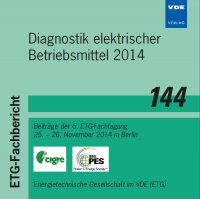Transformers Fleet Ranking based on Risk Evaluation
Konferenz: Diagnostik elektrischer Betriebsmittel 2014 - Beiträge der 6. ETG-Fachtagung
25.11.2014 - 26.11.2014 in Berlin, Deutschland
Tagungsband: Diagnostik elektrischer Betriebsmittel 2014
Seiten: 4Sprache: EnglischTyp: PDF
Persönliche VDE-Mitglieder erhalten auf diesen Artikel 10% Rabatt
Autoren:
Byrne, Austin (Kelman Ltd. Lisburn, GB)
Inhalt:
In today’s marketplace, transformer owners and operators need to carefully tackle the management in greater numbers of aged equipment fleets in an effort to maintain their assets under required conditions. Though there are a number of economic models available for transformer fleet maintenance, a number of failures is always unavoidable, thus such models are based on a minimum of maintenance criteria. Transformer failures, however, always represent a threat for neighboring equipment or even personal injuries. For this reason the industry demands improved tools to mitigate such conditions. Many transformer parameters can be controlled by traditional methods or novel monitoring equipment. However, this may represent a huge amount of data where it becomes very difficult to recognize and classify the actual transformer condition, as well as define the degree of risk associated with its reliable operation. In this paper we propose a new methodology to determine the particular “risk ranking” of transformer fleets based on particular monitored parameters gathered from multiple sources, classifying them in terms of transformer condition as well as sorting them based on their “Risk of Failure Ranking.” In times past, attention has been focused on oil analysis because it is generally accepted that the oil contains 70-80% of the transformer’s health information. In particular, on-line “multi-gas” dissolved gas analysis and water content has been used in this study. In this methodology, priority is given to the gases rate of change (ROC) over gas absolute concentrations, since this rate of change better describes a potential faults’ severity.


